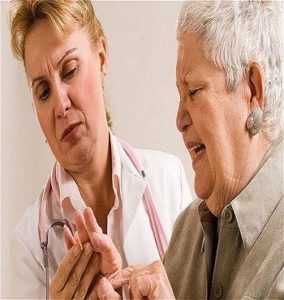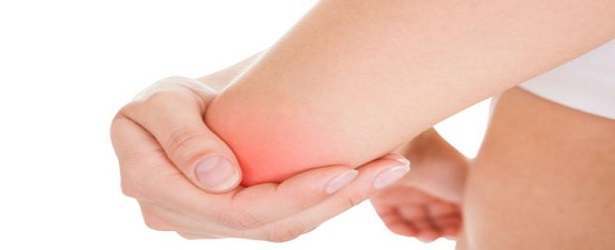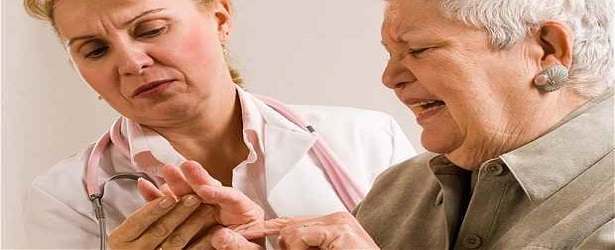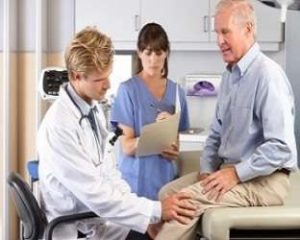Do I have a Joint Condition?
Countless people develop the joint issues and the sad part is that most patients aren’t diagnosed until the latter or advanced stages. Most people won’t consult a doctor until the condition is already worse than this because they think that the symptoms are common and will go away on their own. Symptoms of joint problems include a heat sensation in the affected area, joint inflammation, and difficulty of movement and/or hardening of the joints. Being aware of the symptoms is important since this can help in an early and proper diagnosis. With such a diagnosis patients, can seek the right treatment.
Always Best to Consult Your Doctor
 If any of the above symptoms appear at any given time, consult a doctor or a specialist immediately in order to determine if these symptoms require a proper diagnosis and to get the right treatment. An early diagnosis of joint problems helps in preventing further damage to the joints and the other body parts surrounding it. Joint issues can drastically change the life of the patient, especially when it comes to daily activities. Even walking can become impossible due to the pain; in extreme cases it can even be fatal.
If any of the above symptoms appear at any given time, consult a doctor or a specialist immediately in order to determine if these symptoms require a proper diagnosis and to get the right treatment. An early diagnosis of joint problems helps in preventing further damage to the joints and the other body parts surrounding it. Joint issues can drastically change the life of the patient, especially when it comes to daily activities. Even walking can become impossible due to the pain; in extreme cases it can even be fatal.
At first signs of joint problems, such as difficulty in joint movement, swelling or inflammation, or discomfort in the joint area, immediately ask your doctor before the extent of the damage worsens. Again, early detection of the problem lets the doctor choose from better treatments and medications available. This is far better than a late diagnosis in the latter stages where the condition has already become too severe and completely irreparable.
Many types of joint issues in the field of medicine are categorized based on the severity of the problem from mild, moderate, to severe; this makes the diagnosis difficult at times especially if the symptoms are not really caused by a joint-specific condition but other more serious disorder. Keep in mind that timing is very important when determining the cause of the symptoms or they will only get worse.
First Things to do during the First Stage of the Diagnosis
 The doctor usually asks the patient about the symptoms. During this time the patient does most of the talking, while the doctor lists the things that may be relevant to some possible health conditions. The doctor may ask about the patient’s family medical history followed by physical exams, diagnostic procedures, such as blood tests, stress tests, x-rays, Magnetic Resonance Imaging, and joint aspiration in some cases. If the joint pain appears in the morning or during the daytime, it could be a form of joint problem which is an autoimmune ailment where the immune system attacks the well and healthy cells of the joints and its surrounding area. On the other hand, some types of joint conditions are degenerative and gradually damage the cartilage to an irreparable condition.
The doctor usually asks the patient about the symptoms. During this time the patient does most of the talking, while the doctor lists the things that may be relevant to some possible health conditions. The doctor may ask about the patient’s family medical history followed by physical exams, diagnostic procedures, such as blood tests, stress tests, x-rays, Magnetic Resonance Imaging, and joint aspiration in some cases. If the joint pain appears in the morning or during the daytime, it could be a form of joint problem which is an autoimmune ailment where the immune system attacks the well and healthy cells of the joints and its surrounding area. On the other hand, some types of joint conditions are degenerative and gradually damage the cartilage to an irreparable condition.
These two common types of joint conditions give similar symptoms that start with unbearable pain of the joint with or without movements. Once again, you must have a right and early diagnosis in order to delay the condition’s progression or simply to treat symptoms like deformity and joint pain. While joint conditions do not have any definite cure and may be irreversible, symptoms can be treated to minimize the discomfort.

 Subscribe Now
Subscribe Now

 Symptoms you are Experiencing
Symptoms you are Experiencing



 Other physical conditions related to metabolism can cause joint disorders, too, such as gout. Gout develops due to a high level of uric acid in the body that causes inflammation of the joints and cartilage. The uric acid stays in the joint area, causing damage and extreme pain. The early manifestation of gout is usually observed in the big toe.
Other physical conditions related to metabolism can cause joint disorders, too, such as gout. Gout develops due to a high level of uric acid in the body that causes inflammation of the joints and cartilage. The uric acid stays in the joint area, causing damage and extreme pain. The early manifestation of gout is usually observed in the big toe.

 Your medical history is important in the process of diagnosis. The medical history clarifies to the doctor your physical condition including any past illnesses or even just injuries that might have caused the joint problem to develop. Doctors also consider checking the patient’s family medical history to help gauge the risk of a genetic condition.
Your medical history is important in the process of diagnosis. The medical history clarifies to the doctor your physical condition including any past illnesses or even just injuries that might have caused the joint problem to develop. Doctors also consider checking the patient’s family medical history to help gauge the risk of a genetic condition. In addition, doctors also require technologically aided diagnostics when the condition calls for them, like the X-ray and the
In addition, doctors also require technologically aided diagnostics when the condition calls for them, like the X-ray and the 


